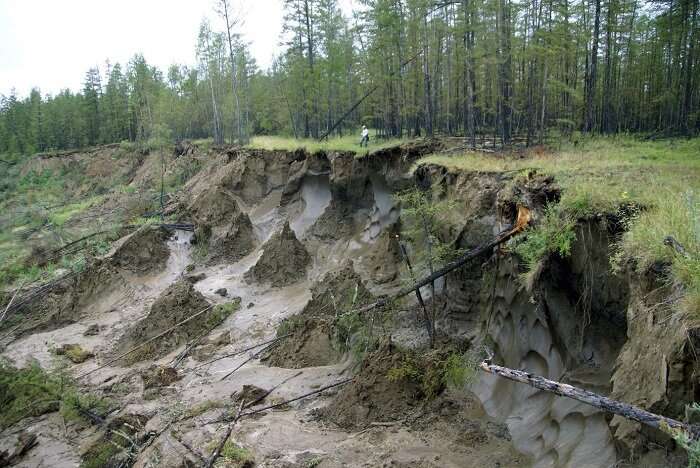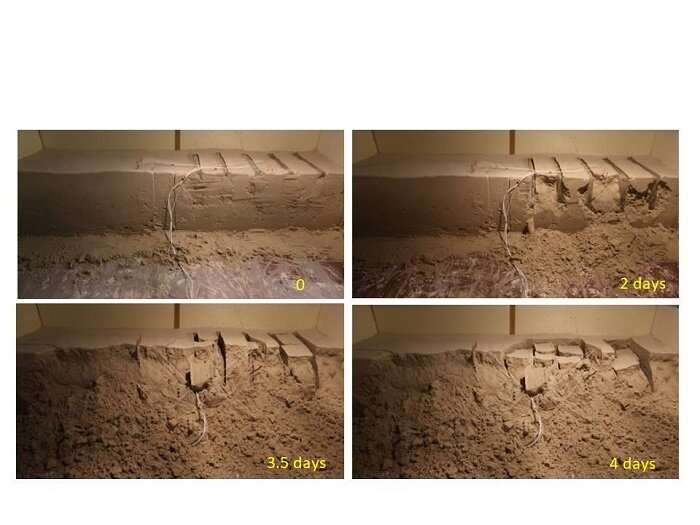Getting to the bottom of Arctic landslides

Erosion of the frozen soil of Arctic regions, known as permafrost, is creating large areas of subsidence, which has catastrophic impact in these regions sensitive to climate change. As the mechanisms behind these geological events are poorly understood, researchers from the Géosciences Paris Sud (GEOPS) laboratory (CNRS / Université Paris-Saclay), in cooperation with the Melnikov Permafrost Institute in Yakutsk, Russia, conducted a cold room1 simulation of landslides, or slumps, caused by accelerated breakdown of the permafrost.
The scientists demonstrated that the ice content of permafrost greatly contributes to soil collapse. They noted that very heterogeneous frozen soils, characterized by the presence of vertical ice wedges,2 undergo major deformation during thaws. At those times, warm air circulates more freely, which furthers slumping. Such erosion during the warming phase, coupled with the input of excess water, accelerates melting and causes subsidence at the base of the ice layer. The rapid breakdown of these ice-rich soils modifies the chemistry of surface water and results in the release of greenhouse gas, which only reinforces the process by accentuating climate change. Thus, it is especially useful to study and monitor slumping to understand and predict future climate trends.
The team's findings are published in Geophysical Research Letters.

More information: F. Costard et al. Retrogressive thaw slumps on ice‐rich permafrost under degradation: Results from a large‐scale laboratory simulation, Geophysical Research Letters (2020). DOI: 10.1029/2020GL091070
Journal information: Geophysical Research Letters
Provided by CNRS


















